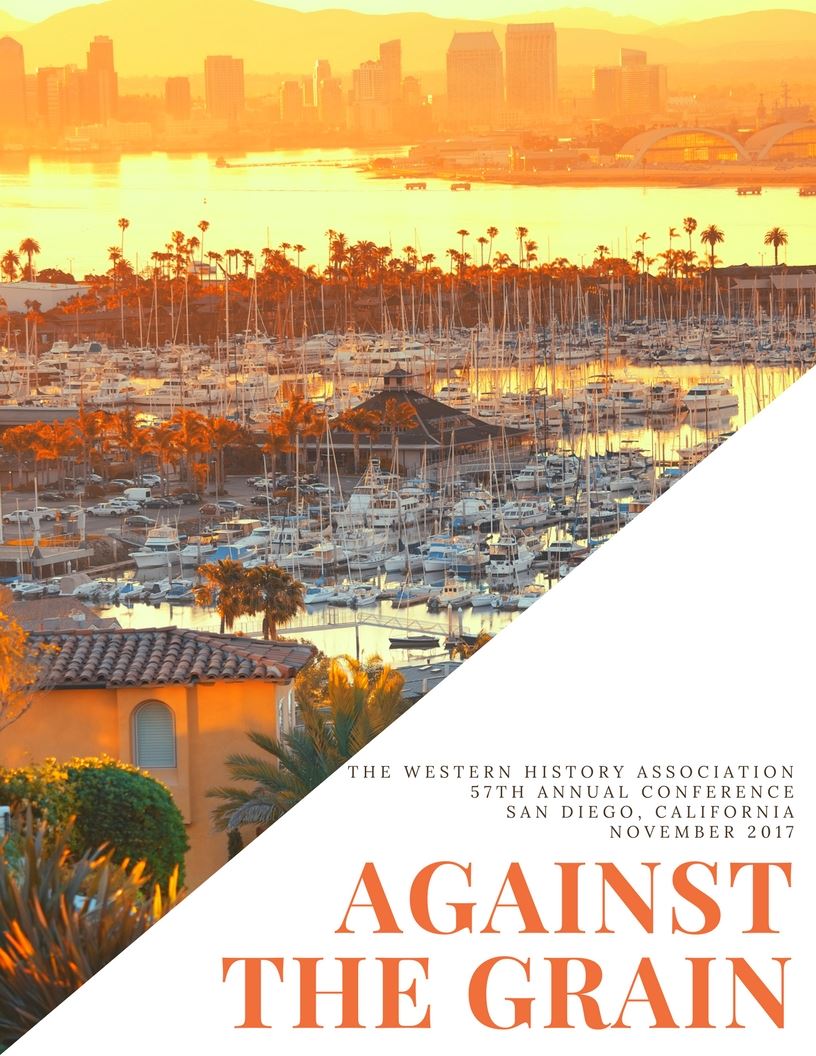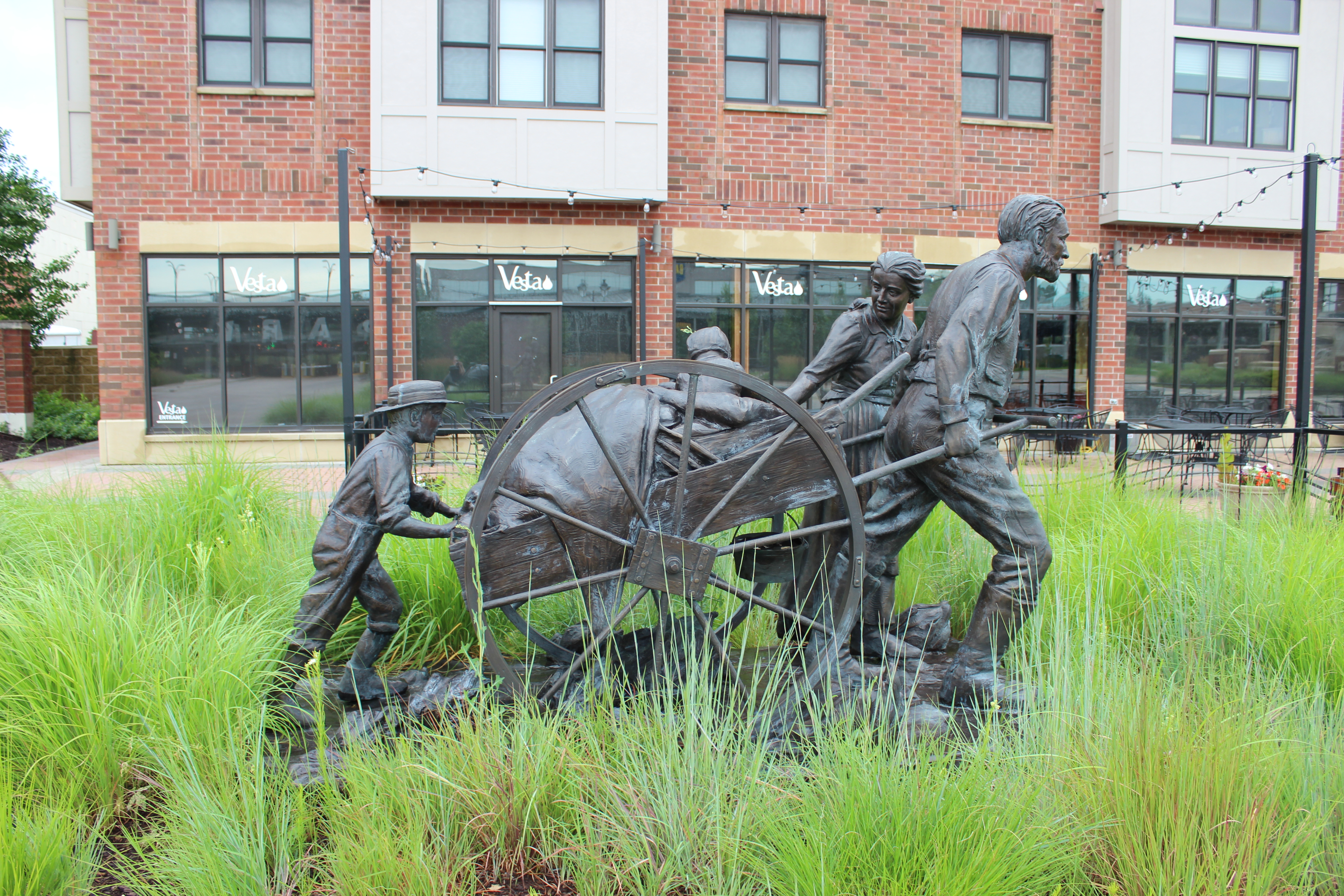 I recently returned from the annual meeting of the Western History Association in San Diego, California. Held at a resort hotel overlooking the beach and separated by freeways from both Old Town San Diego and southern California’s suburban sprawl, this year’s WHA conference was in an ideal location to examine the boundaries between rural and urban spaces, as my panel sought to do:
I recently returned from the annual meeting of the Western History Association in San Diego, California. Held at a resort hotel overlooking the beach and separated by freeways from both Old Town San Diego and southern California’s suburban sprawl, this year’s WHA conference was in an ideal location to examine the boundaries between rural and urban spaces, as my panel sought to do:
Leisure and Living in Wide Open Western Suburban Spaces
In popular imagination, the West is a land of wide open spaces or family farms – in other words, a rural place. Scholarship on the region in the twentieth century emphasizes the urban West. But as the housing subdivisions sprawling from San Diego to Santa Barbara, Phoenix and Las Vegas highlight, a rapidly growing percentage of westerners both live and vacation in suburban spaces. Exploring examples as varied as a Wild West theme park located on an Indian reservation, pioneer statues in New Urbanist exurbs, and tours highlighting ethnic identity in a small college town and labor in North Dakota’s oilfields, this panel explores the intersection of tourism, western mythology, and cultural identity in suburban western spaces. Meeting such diverse individuals as Sunbelt homeseekers, 1930s car camping families, “Occupy Wall Street” protesters, and nudist tourists suggests the range of westerners’ experiences in these places. Taken together, our varied presentations query the boundaries of natural, rural, urban, and suburban spaces, and the complex interrelationships between traveling and living in the twentieth-century West.
Our fantastic panel brought a wide range of disciplinary approaches to this question. Lawrence Culver (History, Utah State University) examined the role of climate in promoting the growth of suburbs and outdoor recreation in southern California. Phoebe Young (History, University of Colorado at Boulder) demonstrated the ways that camping blurs the boundaries between nature and urban development. Sarah Schrank (History, California State University, Long Beach) explored notions of “naturalness” in nudist tourism. I (Cynthia Prescott, History, University of North Dakota) compared uses of cowboy art and local pioneer monuments to create an appearance of historicity in suburban locales. Laura Barraclough (American Studies, Yale University) examined the relocation of a Wild West theme park from a wealthy white suburb to an American Indian reservation outside Phoenix, Arizona. Natchee Barnd (Ethnic Studies and Native American Studies, Oregon State University) shared ethnic studies tours of a college town in Oregon’s richest agricultural region. And Bret Weber (Social Work, University of North Dakota) introduced a tourist guide to industrial production in the rural northern Great Plains.

Stanley J. Watts, Handcart Pioneers, Coralville, Iowa
Taken together, these diverse presentations grappled with notions of race, class, sexuality and nature in diverse places across the American West and throughout the twentieth century. In retrospect, though, I recognize that none of our presentations grappled in any meaningful way with gender. Yet most if not all of these topics are shaped by gendered discourse. “Wild West” imagery is overwhelmingly masculine. North Dakota’s Bakken oil patch was famously populated by “man camps” – and fascination with that single-gender temporary housing helped to motivate the study that produced Weber and William Caraher’s tourist guide. But campgrounds and suburban neighborhoods are conceived of as the natural home of nuclear families. Suburban homes that were once the domain of women as full-time homemakers have become increasingly deserted during the day as married women have entered the workforce in large numbers and leisure time is increasingly devoted to ever-longer commutes and shuttling children to organized sports and other scheduled activities. These changing family structures should be compared to those in both urban and rural places, and could be fruitfully compared to far more static memory of earlier gender and family roles.

Pingback: The Past, Present and Future of Rural Women’s Studies | Rural Women's Studies